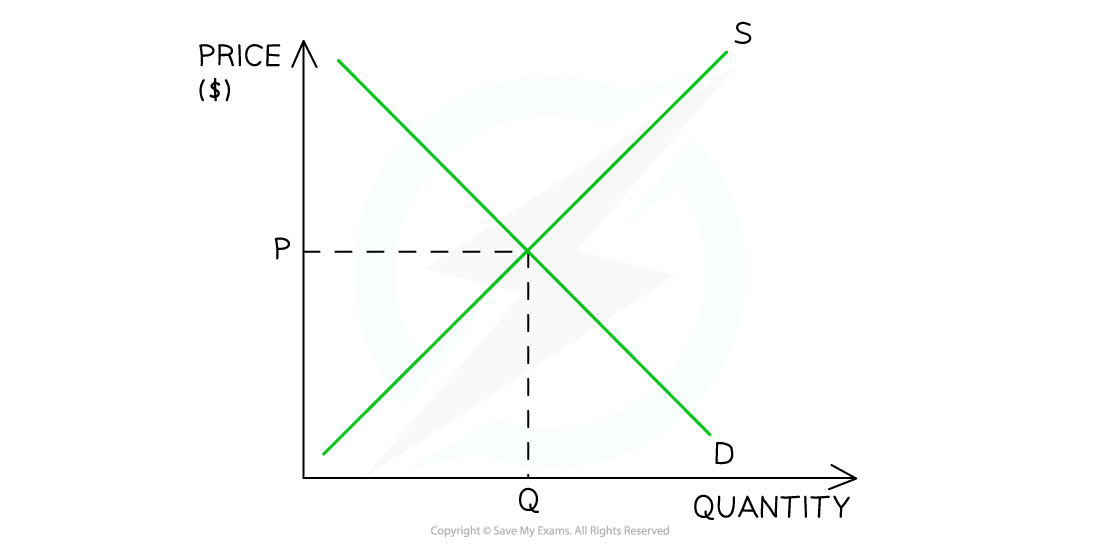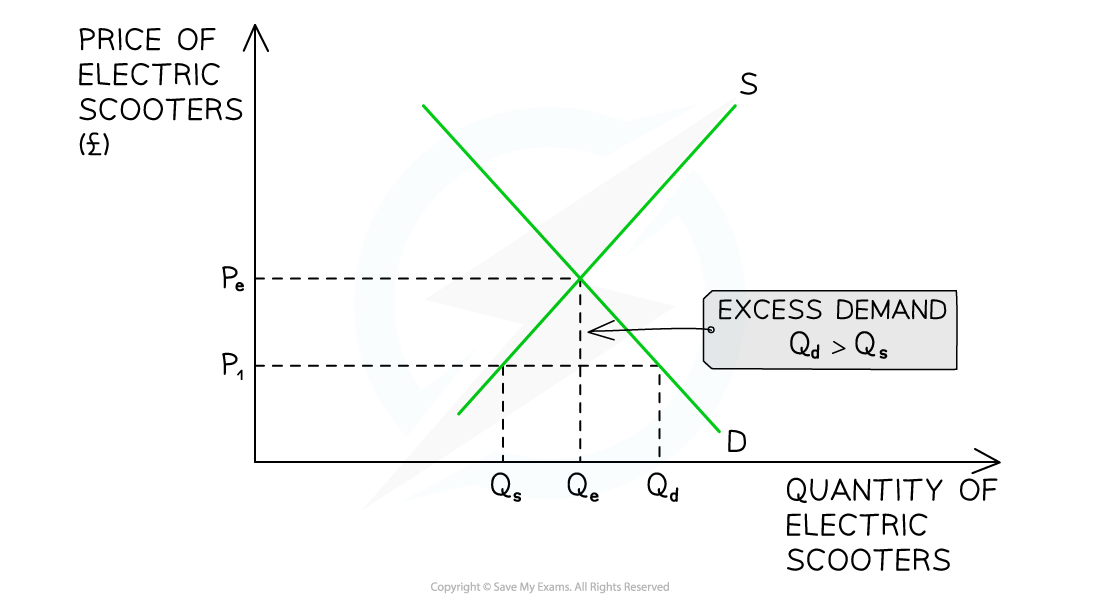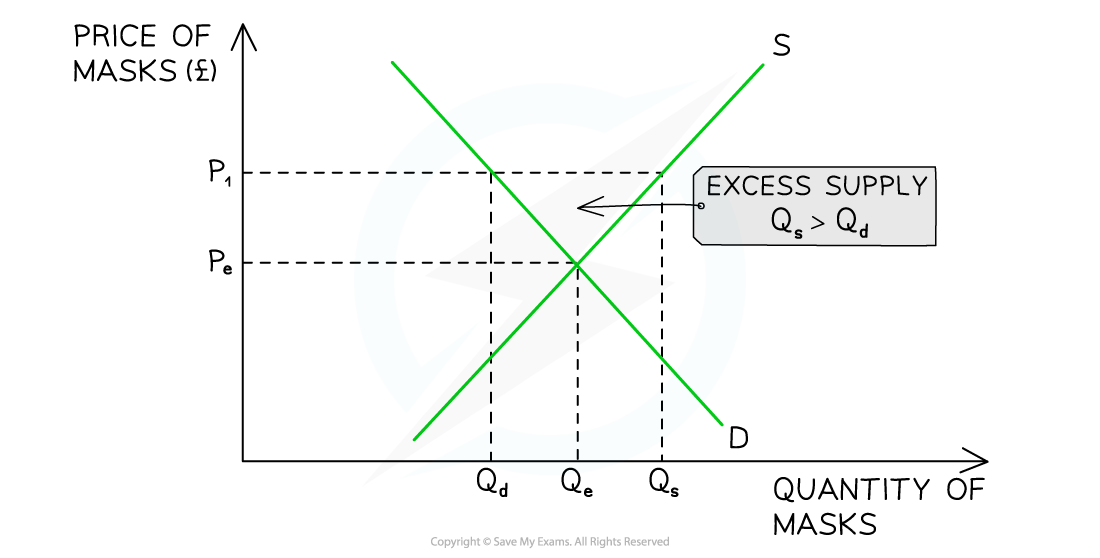Market Equilibrium
- In a market system, prices for goods/services are determined by the interaction of demand and supply
- A market is any place that brings buyers and sellers together
- Markets can be physical (e.g. McDonald's) or virtual (e.g. eBay)
- Buyers and sellers meet to trade at an agreed price
- Buyers agree the price by purchasing the good/service
- If they do not agree on the price then they do not purchase the good/service and are exercising their consumer sovereignty
- Based on this interaction with buyers, sellers will gradually adjust their prices until there is an equilibrium price and quantity that works for both parties
- At the equilibrium price, sellers will be satisfied with the rate/quantity of sales
- At the equilibrium price, buyers are satisfied with the utility that the product provides
Equilibrium
- Equilibrium in a market occurs when demand = supply
- At this point, the price is called the equilibrium or market-clearing price
- This is the price at which sellers are clearing (selling) their stock at an acceptable rate

A graph showing a market in equilibrium with a market clearing price at P & quantity at Q
- Any price above or below P creates disequilibrium in this market
- Disequilibrium occurs whenever there is excess demand or excess supply in a market
- Disequilibrium occurs whenever there is excess demand or excess supply in a market
Market Disequilibrium
Disequilibrium: Excess Demand
- Excess demand occurs when the demand is greater than the supply
- It can occur when prices are too low or when demand is so high that supply cannot keep up with it

A graph that depicts the condition of excess demand in the market for electric scooters
Diagram Analysis
- At a price of P1, the quantity demanded of electric scooters (Qd) is greater than the quantity supplied (Qs)
- There is a shortage (excess demand) in the market equivalent to QsQd
Market Response
- This market is in disequilibrium
- Sellers are frustrated that products are selling so quickly at a price that is obviously too low
- Some buyers are frustrated as they will not be able to purchase the product
- Sellers realise they can increase prices and generate more revenue and profits
- Sellers gradually raise prices
- This causes a contraction in QD as some buyers no longer desire the good/service at a higher price
- This causes an extension in QS as other sellers are more incentivised to supply at higher prices
- In time, the market will have cleared the excess demand and arrive at a position of equilibrium, PeQe
- Different markets take different lengths of time to resolve disequilibrium
- E.g. Retail clothing can do so in a few days. Whereas the housing market may take several months, or even years
Disequilibrium: Excess Supply
- Excess supply occurs when the supply is greater than the demand
- It can occur when prices are too high or when demand falls unexpectedly
- During the later stages of the pandemic, the market for face masks was in disequilibrium

A graph that depicts the condition of excess supply in the market for Covid-19 face masks during the later stages of the pandemic
Diagram Analysis
- At a price of P1, the quantity supplied of face masks (Qs) is greater than the quantity demanded (Qd)
- There is a surplus in the market (excess supply) equivalent to QdQs
Market Response
- This market is in disequilibrium
- Sellers are frustrated that the masks are not selling and that the price is obviously too high
- Some buyers are frustrated as they want to purchase the masks but are not willing to pay the high price
- Sellers will gradually lower prices in order to generate more revenue
- This causes a contraction in QS as some sellers no longer desire to supply masks
- This causes an extension in QD as buyers are more willing to purchase masks at lower prices
- In time, the market will have cleared the excess supply and arrive at a position of equilibrium, PeQe
Exam Tip
Memorise the rule that shortages arise when the price is below equilibrium whereas surpluses arise when the price is above the equilibrium.